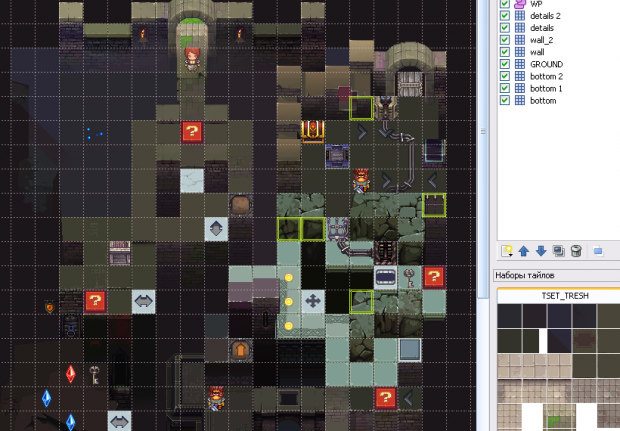

- #Tiled map editor how to#
- #Tiled map editor install#
- #Tiled map editor software#
- #Tiled map editor code#
- #Tiled map editor password#
Then run the below command to start Tiled Map Editor on your ubuntu system.
#Tiled map editor install#
This will install Tiled Map Editor on Ubuntu.
#Tiled map editor password#
Then enter the Ubuntu user password if needed.

In your terminal app (Ctrl+Alt+T) type the below Tiled Map Editor snap installation command. Then go to the Permissions tab and check the Allow executing files as program option. You can also do this by right clicking on the downloaded. If asked then enter your Ubuntu user password. Then run this command to change its permission and make it as executable. In terminal, navigate to your download location.

Since I had such a hard time finding anything on this subject matter that wasn’t complete garbage or useless information I will share my findings.Also Read: Tuxemon Open Source Monster Fighting Turn-based RPG Game
#Tiled map editor software#
However I still think the fact that I have to create an entire function to convert something so simple as points and pixels is a bit ridiculous… If it were me creating the software I would make multiple formats to export to… such as the ability to create maps based on points vs pixels or whatever other measurement system your little heart desires! But what do I know I’m just a guy programming little app games in his free time while finishing school hahahaįor anyone looking for this solution. When I learnt HaxeFlixel a while back I used Tiled Map Editor, so I thought Id show you how I do it. When it comes to making level in HaxeFlixel, Ogmo3 is the defacto choice for most developers.
#Tiled map editor how to#
How to use Tiled Map Editor to create a level in HaxeFlixel. I also found that adding the sprites as children of the map its self makes their position exact: How to make your first game in HaxeFlixel 11. However my plan is to make some function that can convert the position based on the retina device: tmx files in the repo (desert, sewer, etc) which all use. animated tiles not saved to tmx/tsx file. So I guess my question now is should I position my sprites based on if the device is retina or not because in my head as long as the device is non-retina I don’t need to mess with the sprite positioning, the one to one ratio should allow for the sprite to be exactly where the object is. Hey everybody, This weekend I finally had time to round off the Tiled 0.10 release. I am supporting devices from the iPhone 4 and up so all retina based. Well I looked more into this and learned nothing new… On retina devices points are at a ratio of 1pt:2px and on a standard device it is a one to one ratio. I found that if I take the values of x and y from the CCDictionary and divide them by the contentScaleFactor I get positioning very close to where it is supposed to be, however this is not a solution because it is not practical to constantly do that across every device every time an object is created or moves or replaced or set or whatever you want to do. This is due to the fact that my sprite is way off screen to the right… (200 px or so and who knows how high or whatever) My only explanation for this is that the graphical layers, and the maps themselves get scaled accordingly but the object layer’s positions do no get repositioned based upon this newly scaled map thus making the object layer do some really funny things like spawn your sprites on Mars or something. However when I run the program my sprite is nowhere to be found. It allows you to quickly create a tilemap by importing tilesets and drawing the map using a suite of visual tools. Tiled is free, open-source, and widely used in the games industry. I then get the x and y values and set my CCSprite to this position. One of the best free tools to do so is the Tiled Map Editor. Here is where my story turns bad… I try to add my character to the scene by extracting the spawn point from the object layer into a CCDictionary.
#Tiled map editor code#
I write my code to add the map and “Whoosh” there it is working perfectly across the different devices. In my AppDelegate I set up the contentScaleFactor, the resource paths, and choose the FixedWidth policy and everything is going just swell. tmx maps for each resolution (HD “2048x1536” and SD “1024x768”) and added them to my resources. the last layer is an object layer consisting of a spawner for the character in the middle of the tmx map. for the meta tile layers for collision detection. However I ran across a universal resolution issue… My Levels contain 3 layers. Alright, I recently started work on a pac-man style game using Tiled to quickly create my levels which is SUPER awesome.


 0 kommentar(er)
0 kommentar(er)
